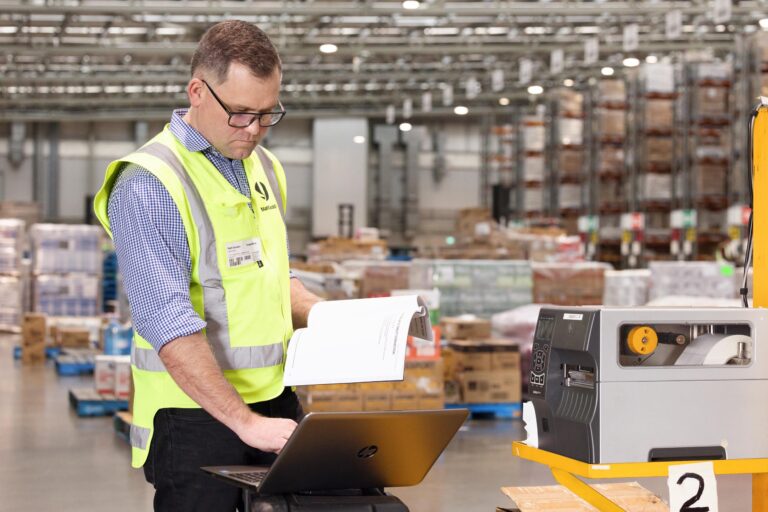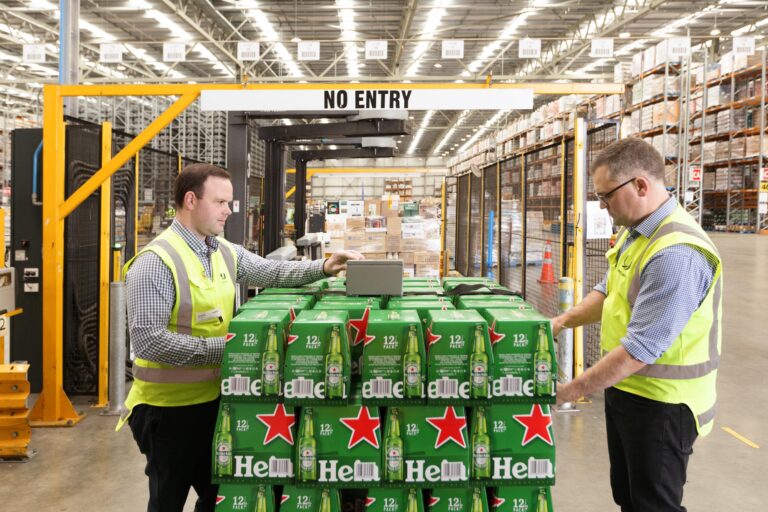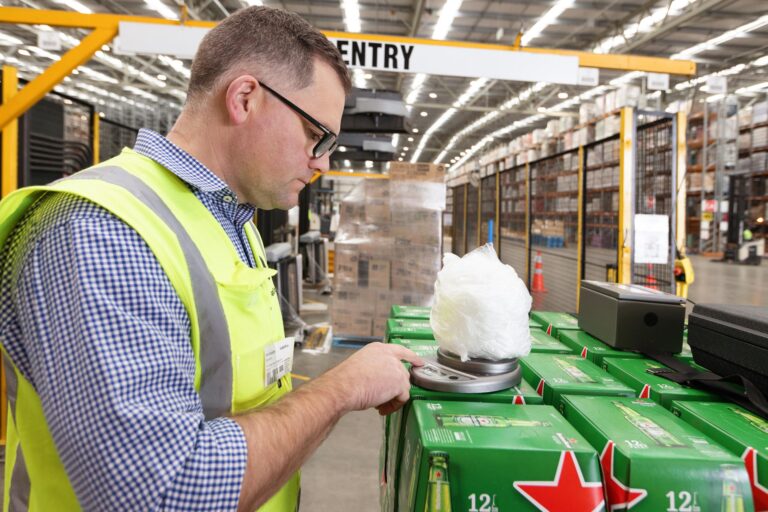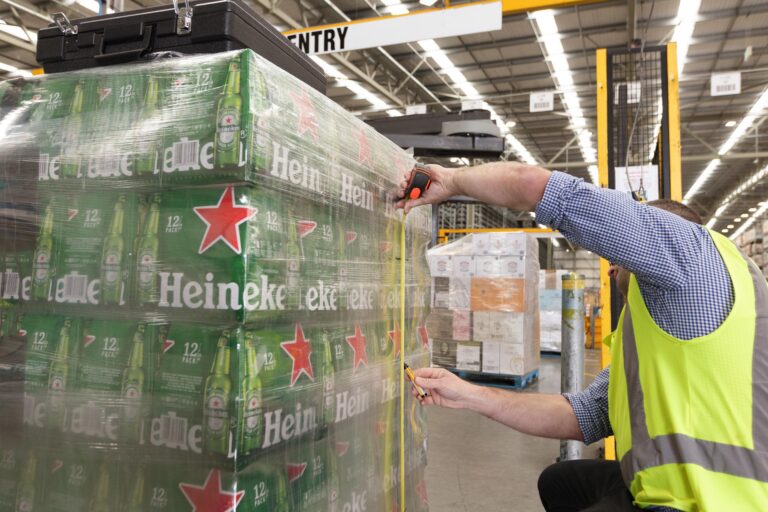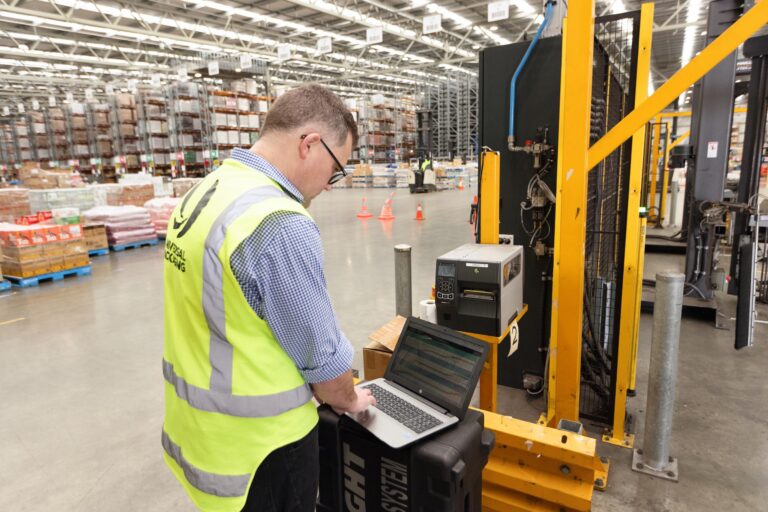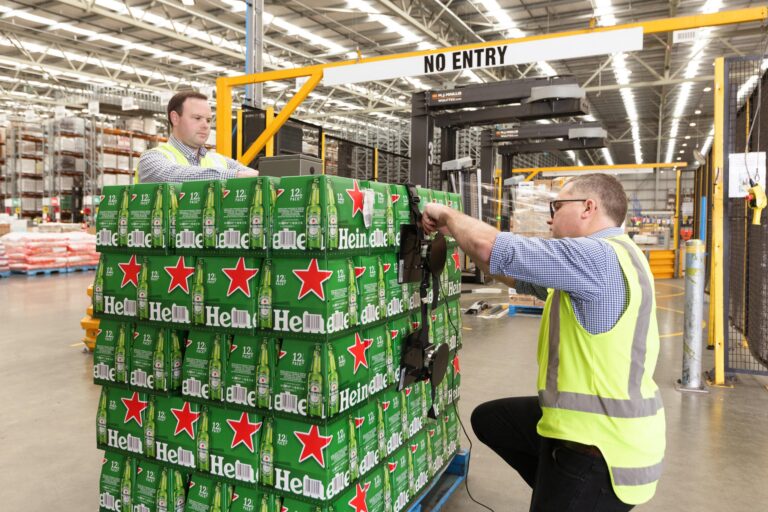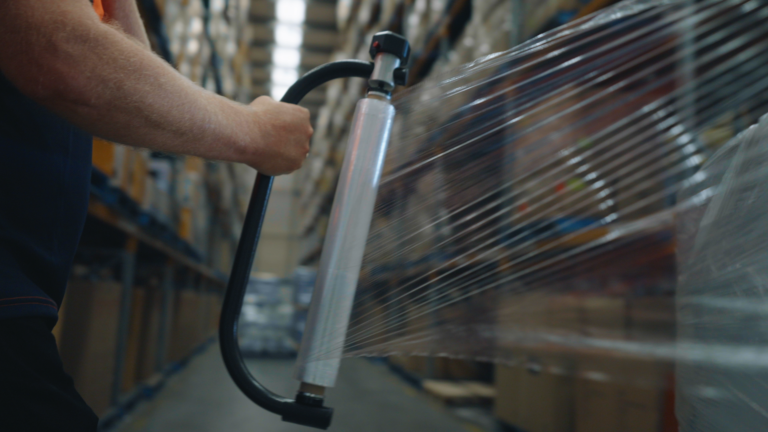Containment testing
In the past, product damage from shipping has been seen as an inescapable fact of life. It wasn’t a matter of ‘if’ there was product damage but ‘when’ and ‘how much’. Nowadays businesses are realising the overall costs of product damage must be measured in time and cost spent replacing and repackaging, the sustainability impacts, and the blow to their brand reputation.
Getting goods from A to B with ongoing peace of mind means making sure all the i’s are dotted and the t’s crossed in your pallet containment process.
Our expert Universal Packaging consultant team have decades of experience between them, ensuring they can run a number of key pallet containment tests and deliver crucial insight into wrap optimisation, equipment settings and pallet plastic use.
Why is it important?
Depending on the goods being transported, unstable or inefficient wrapping could spell the end to an entire pallet or damage to high value products within. Enough film must be applied with the right amount of tension to hold the load in place through sudden braking or sharp turns. This is governed by an international standard, called the Standard Guide for Performance Testing of Applied Stretch Films and Stretch Wrapping ASTM D8314. It’s important business.
Our tests involve analysing how much the wrap yields under pressure, which is dependent on the shape, size and density of the load, and carrying out measuring processes such as the tilt test. The data collected from these tests provide valuable clarity into exactly what wrap to use, and how much is needed – and can result in significant stretch film reduction and cost savings.
All loads are not created equal
Key containment aspects
we test for include:
· Stress points
· Stability
· Load shape and size
· Speed of loading
· Fragility level
All loads are not created equal
Key containment aspects
we test for include:
· Stress points
· Stability
· Load shape and size
· Speed of loading
· Fragility level
FAQs
On average, the required containment force of a load is around 1% of the weight of the goods on the pallet. Without this measurement, you can risk damage to goods while they’re in transit – which is the whole reason for wrapping them up in the first place. However so too does this measurement change according to other variables within the pallet load.
Depending on the product being wrapped and the speed the pallets are being produced, most tests will take somewhere between 30 minutes and two hours.
Yes, our maintenance and repair contractors can come to you, no matter if you’re in Mangamuka, Matamata or Mossburn. If you need help wrapping tight, we’ll be there to see you right.
Finding out the cause of this problem takes some trial and error. Initially, check for obvious surface and edge deterioration and remove any damaged film. If there doesn’t appear to be any damage, check the film is unwinding freely from the roll. The carriage rollers can cause problems so it’s also helpful to check the rubber lagging is intact and the metal idle rollers are free from sharp edges and nicks.
Is the film tracking down the roller and pinching beneath it? To correct this, lift the roll on the film mandrel by placing a piece of cardboard core under the roll until the film is only touching the flat face of the roller. Is the carriage door closing correctly? Check the hinges are tight. Again, the film could be pinched, causing problems with the latch. Film tension could also be the culprit – reduce the tension and you may find the problem is solved.
Another problem we encounter (especially with some of the inferior pallet wrappers on the market), is a worn film drive control switch. When the switch is worn, it won’t feed the film consistently and there will inevitably be film breakage. Give us a call and we will fix this for you.
